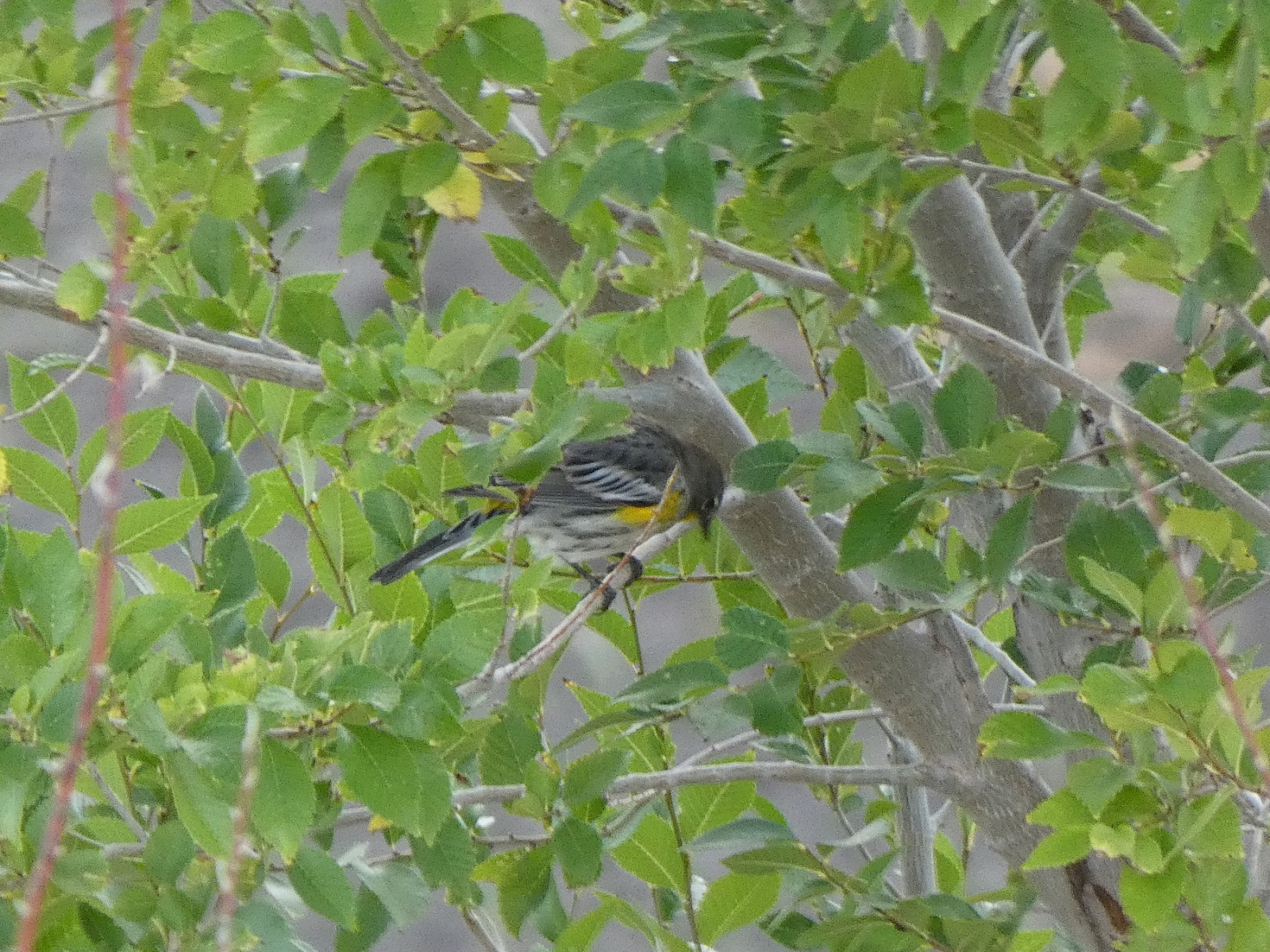Top 5 birdwatching tips for beginners
Birdwatching is a relaxing pastime anyone can enjoy, but if you know how to spot birds efficiently, it can be much more pleasurable. Here are five tips you can use to spot more birds.
1. Get a pair of binoculars
Birds tend to be elusive, so having proper gear can increase your chances. Birdwatching with a naked eye is not very useful if you want to spot birds in forested and lacustrine environments. A pair of binoculars will help you observe birds clearly so you can be confident in knowing what you saw.
Here is an example:
This yellow-rumped warbler(Setophaga coronata) tucked in the high tops of a tree is difficult to spot, much less identify. Having binoculars will help you observe the bird with clarity. Oftentimes, I see veteran birdwatchers carrying large scopes to spot birds near large bodies of water. Although this is a great thing to have, it is not necessary; scopes are mainly used to look at waterfowl and shorebirds. I would suggest carrying a pair of binoculars for now, as enough birding worlds are opened up with them.
2. Learn about birds in your free time
I won't lie - becoming a good birdwatcher requires experience - you have to go on many walks and observe birds with an acute eye. However, you can speed up your journey by browsing field guides and blogs like these. Researching birds in your area or in a specific hotspot can help you be prepared for an upcoming hike or just to learn about the birds in your backyard. Go on sites like Merlin and Ebird to see which birds are in your area, or the most likely birds.
3. Know how to observe birds
If you want to spot birds, you have to be dedicated. This means staying quiet in bird walks and meticulously searching your surroundings for movement. Birds can be easily spooked, and you never want to make loud noises. However, sometimes - no, many times - birds place themselves in just the perfect notorious way out of your sight. This is when you should use the pishing technique. Clench your teeth and use your lips to make a soft pish sound to intrigue birds. Small birds are especially startled by these sounds and want to learn more about the source.
4. Go to bird hotspots
Birds will frequently go to the same places year after year. These places are often wooded or near bodies of water Take the Garret Mountain Reservation in Woodland Park, NJ. It has an extensive trail system, marshes, woods, and many other habitats. It attracts many birders all throughout the year because of its location. To find hotspots in your area, use an app like eBird. Browse through hotspots closest to your house, and visit them(ideally during migration time). eBird is an invaluable resource used by countless birders. You can also browse specific bird species if you have a target bird.
5. Have patience in your bird walks
Patience is an underrated trait all birders should have. If you have the patience to stop and look around in bird walks, you can see so many more birds. I personally attest to this. I was birdwatching near a large reservoir during the summer, aiming to add some waterfowl to my life list. However, when I looked over the lake with my scope for a brief look, I couldn't see any birds, let alone waterfowl. Still, I didn't lose my patience, and after deeply examining the far side of the lake, I saw several wood ducks! Wood ducks are not common in my area during the summer, so this was a bit of a rarity. Imagine what would have happened if I had simply gave up. Birdwatching should be a calm hobby, not a brisk one.
Thanks for reading!


Comments
Post a Comment